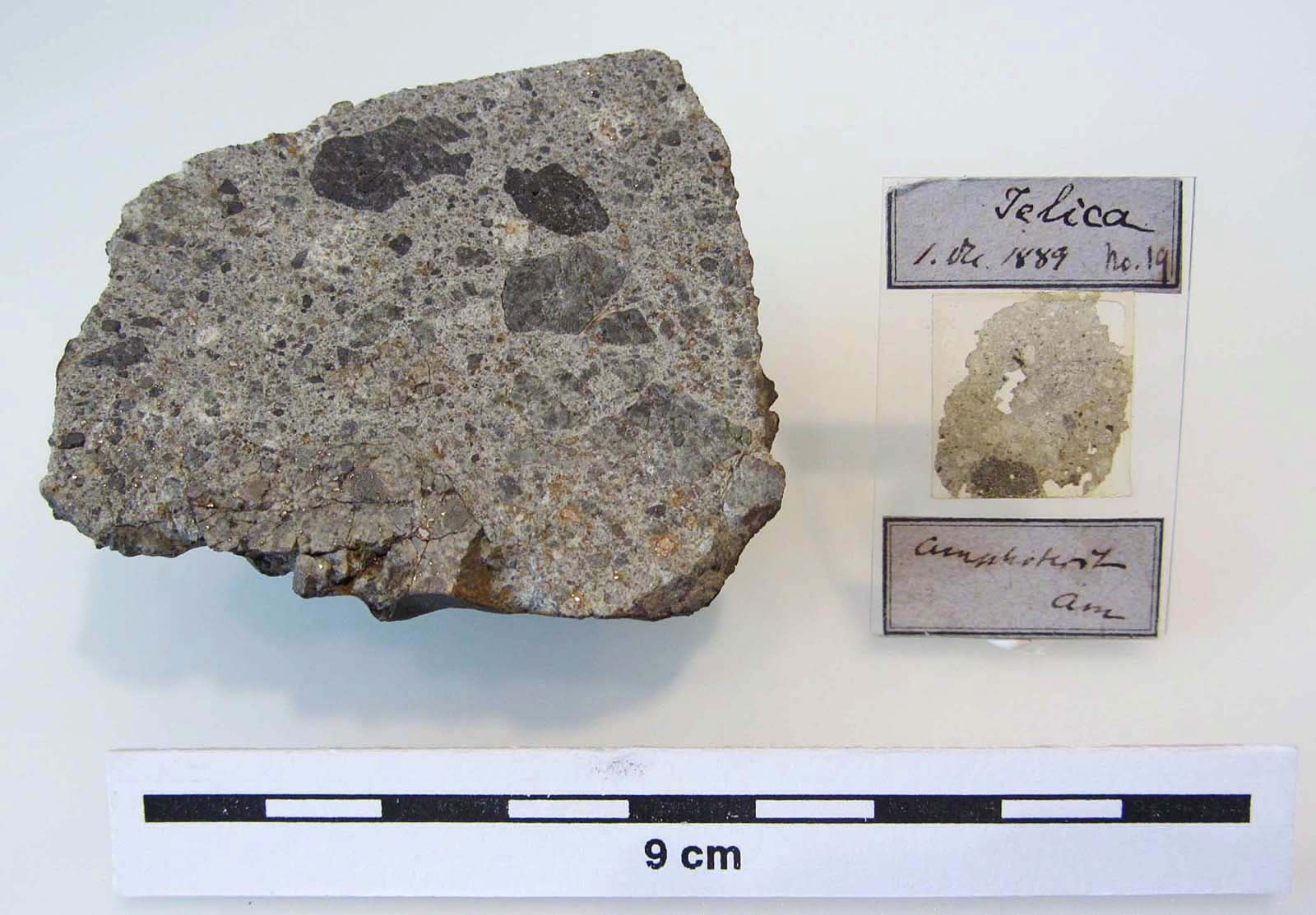|
Roll Overs:
#1
#2
#3
#4
#5
#6
|

|
158 grams. LL6
TKW 34 kg. Observed fall 1 December 1889, in Serbia and Montenegro.
Jürgen/jnmczurich writes:
Jelica End Section:
Fresh end section, small-hand size (61 x 55 x 32 mm), with dull brownish to black crust and large polished face (61x55 mm).
Received in exchange from a Swiss University in 1999. Originaly weight was 163 g before I polished the badly sawn face to make the end section better looking.
The known previous owner list:
- Mineral dealer Julius Böhm / Vienna
- Immanuel Friedlaender (German/Swiss volcanologist) gave it as a loan to the "Vulkan-Institut in Neapel"
- Later it was donated to a Swiss University. I am working to get the old documentation.
- Received by me in 1999, after a hard exchange fight.
Jelica Thin Section:
Poor in quality, but very historic thin section. Meteorite size 18 x 17 mm. Angular fragments and some non-chondritic melt rock clasts within a fine grained matrix. Due to some rounded melt rock clast within the thin section it looks a bit like a regolith breccia. The three thin section pictures were taken under cross-polarized light. The pictures were not PhotoShopped.
Interesting side notes to the thin section:
The historic thin section was probably made by the manufacturer Ivan Werlein / Paris. He was a brilliant Russian instrument maker (microscopes) and he worked to improve the polarization microscope technique in Paris in the 1870s and 1880s.
On the backside of the thin section labels is the manufacturer reference "Ivan Werlein / Paris" and also the reference to an award he won - "Médaille de Or" (gold medal) of the "Exposition Universelle de 1878" (World Exposition 1878 in Paris/F). Jelica fell twelve years later (Dec. 1st, 1889). It seems that Ivan Werlein used the small labels (1878…) as a kind of early advertising medium over a time period from at least 1878 till 1889, maybe longer. I think this makes the thin section very unique.
I checked by microscope, but neither the polished face of the end section (60x55 mm), nor the old thin section (18x17 mm) shows any evidence of chondrules or relict chondrules. The maximum dimension of the gray to black melt rock clasts within the polished face of the end section is 23 x 12 mm. Sparsely distributed tiny small metal flitters and a few troilite inclusions no bigger than 2 x 1.5 mm can be seen in the polished face.
The metal and troilite distributions are the only visible characteristics to indicate that Jelica is a chondrite. Jelica is more achondritic then chondritic looking. In older times (A. Brezina) the amphoterites (LL chondrites) were put into the group of achondrites or howarditic chondrites. It can be found in old scientific literature that the difference between howardites and howarditic chondrites was the missing white powdery Feldspar.
I love this old stuff and their stories.
|
Click to view larger photos
#1
#2
#3
#4
#5
#6
|
Found at the arrow (green or red) on the map below
|
|
| |
Bernd Pauli
9/25/2016 5:41:28 AM |
Jelica contains native copper! |
Matthias
9/25/2016 3:42:08 AM |
The aura of old labels accompanying such historic pieces is unique indeed. Makes us feel time passing. Wonderful constellation, J*rgen, worth more or less any fight. |
| |
|